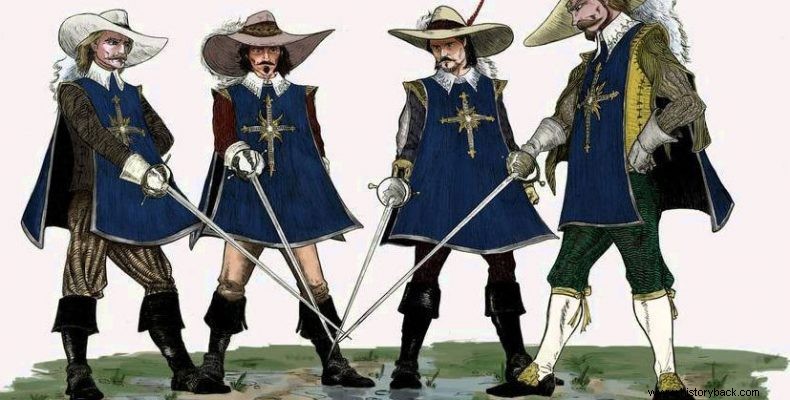
The King's Musketeers, known as Musketeers to many, were the most elite soldiers of Bourbon France, writing pages of glory on the battlefields and igniting the popular and literary imagination.
The company of mounted musketry guards was formed in 1622 by the French king Louis XIII. It was an evolution of the Carabinieri, light horsemen of the Royal Guard. The official duties of the men of the company were to protect the king when he was outside his palaces. They also protected him on the battlefield.
The men carried the standard armament of dragoons, consisting of a musket, a long epee-type night sword, and a manual. Later they were also equipped with a bayonet, while they gradually evolved into horsemen.
They originally fought as dragoons (mounted infantry), being able to fight both on horseback and on foot. As mounted infantry, they only used horses to move faster, but fought on foot. However, as all of them came from the noble class, they had, in any case, experience in horse riding and horse fighting which they also used on the battlefield.
They carried the classic infantry musket, a fuse, a weapon that was unwieldy, heavy, and not particularly effective when not used en masse. For this reason the Musketeers were trained to fight as infantry, fighting in pairs.
Also, after the bayonet was introduced into the French arsenal, it was one of the first units to be equipped with it. The bayonets of the time were fitted inside the barrel of the weapon, thus depriving it of the ability to fire. For this reason it was the last resort for the soldier equipped with it.
Their common feature was the characteristic long tunic, in the form of an apron, type of tabard, of royal blue color, which carried a cross sewn with silver thread on the front and back. Blue was the color of the royal house of Bourbon that ruled France, and the tunic handed down, along with the sword to each man in the unit signified not just that he belonged to the unit, but that he belonged to the king himself, personally.
Also the men wore short infantry boots with spurs so they could move and fight on foot rather than the thigh high cavalry boots. The ranking in the unit was based on meritocracy, among the lower French nobility, without taking into account their economic status. The company initially had a strength of 150 men.
It later developed into a regiment with a strength of 300 men. The first battle in which they participated was the siege of the city of La Rochelle, by royalist troops, against the Huguenots who held it, in 1622. They also fought in the Thirty Years' War and against the Spanish, until 1659.
During the reign of Louis XIV the unit formed an integral part of the Royal Mounted Guard of the House of the King (Maison de Roi) and saw outstanding results in the War of the Succession (1667-68), the Dutch War (1672-78), the War of the Grand Alliance (1688-97) and the War of the Spanish Succession (1700-15).
The unit continued to exist until 1776, when it was dissolved for financial reasons by Louis XVI. It was reconstituted after the first fall of Napoleon, in 1814, for a short time.
However, the period of its absolute glory is placed, chronologically, during the reign of Louis XIII and XIV. In 1623, a second company was formed which formed the personal guard of Cardinal Richelieu , prime minister, then, of France and was also preserved by his successor Cardinal Mazarin.
After the latter's death the company was united with the royal company and formed a regiment, 300 strong. The men of the first company were given gray horses and those of the second company black horses. Consequently, the first company was called the "company of the Gray Musketeers" and the second the "company of the Black Musketeers".
The Musketeers were, almost always, the vanguard of the French armies and in the reign of Louis XIV they had an opportunity to prove their worth on the battlefields, as France found itself fighting from 1667 to 1715, almost without interruption.
The unit was the source of inspiration for the great Alexandre Dumas, in his novel "The Three Musketeers ». The characters in the novel are based on real people , Charles Osier de Bates de Castelmore, Comte d'Artagnan, Armand, Chevalier de Sigeguy, d'Athos et d'Ottevig, Henri, Chevalier d'Aramics and Isaac de Porto. All four, as d'Artagnan, Athos, Aramis and Porthos, star in the novel.
D'Artagnan was killed in 1673, during the siege of Maastricht , in the Dutch War, d'Atos was killed in a duel, at Paris, in 1643, d'Aramitz resigned, in 1648, and died a private, either in 1655 or 1674. de Porto finally retired in 1652, and died at an old age.
